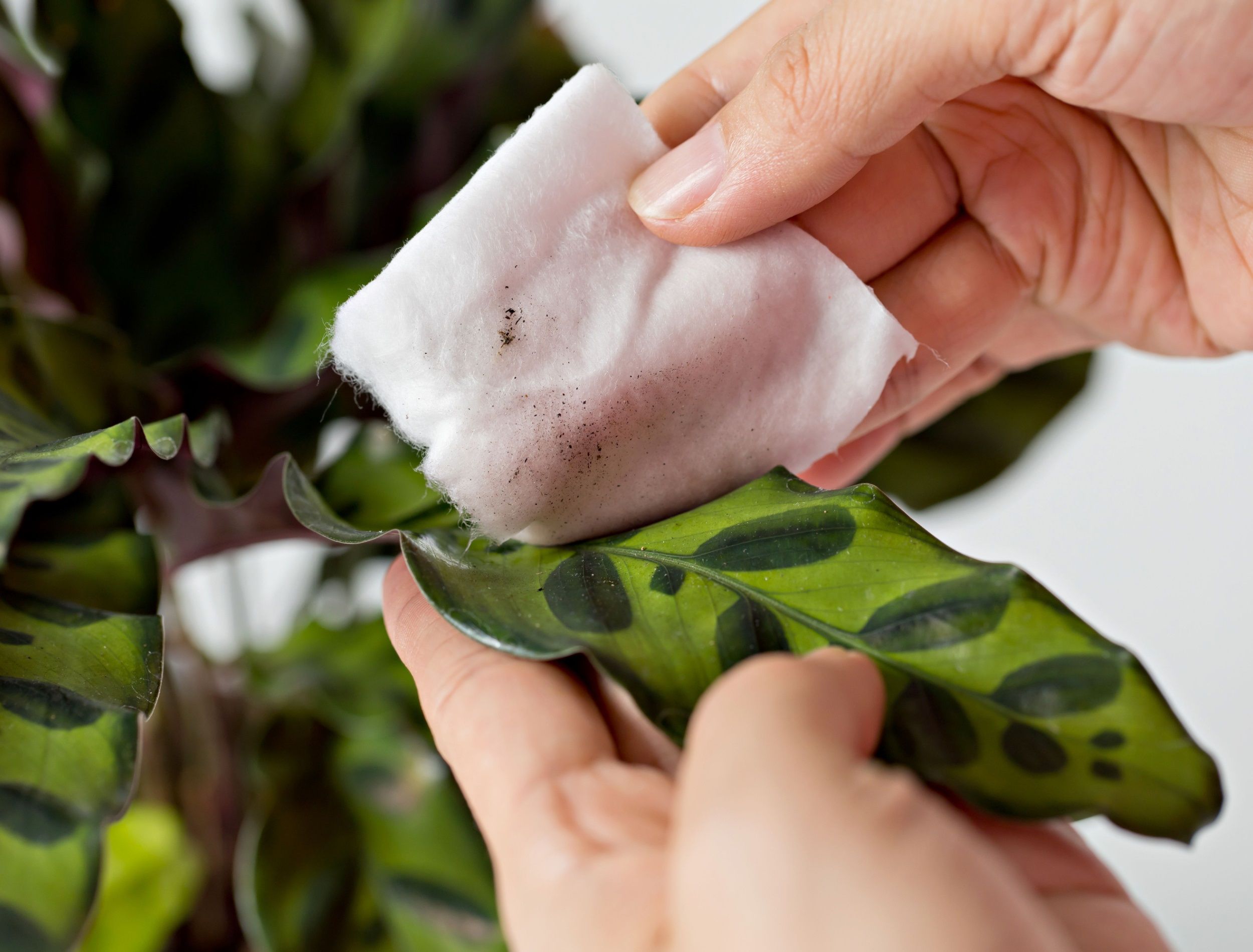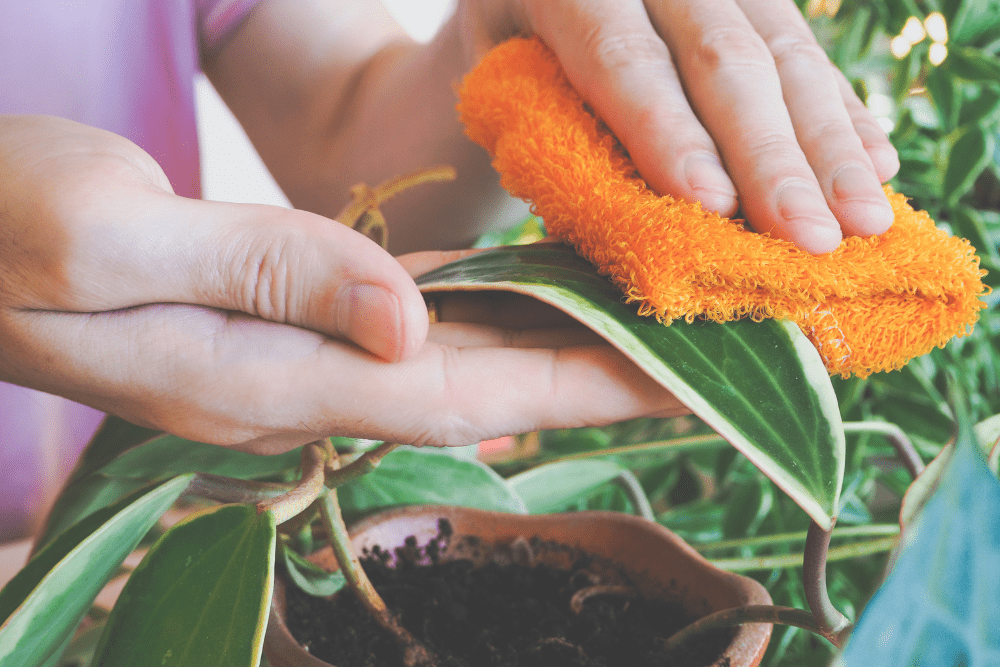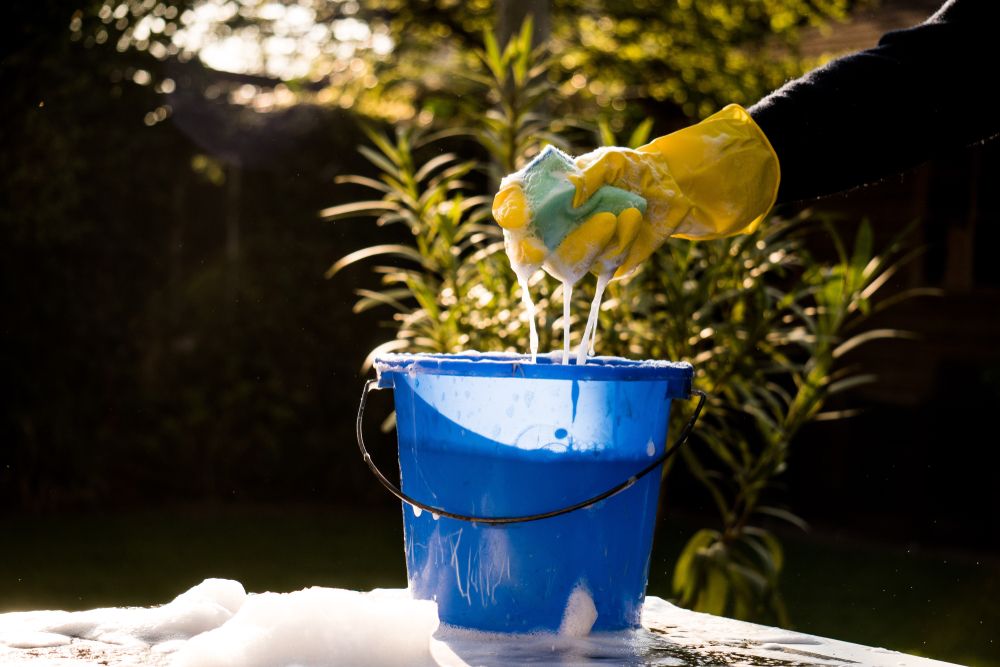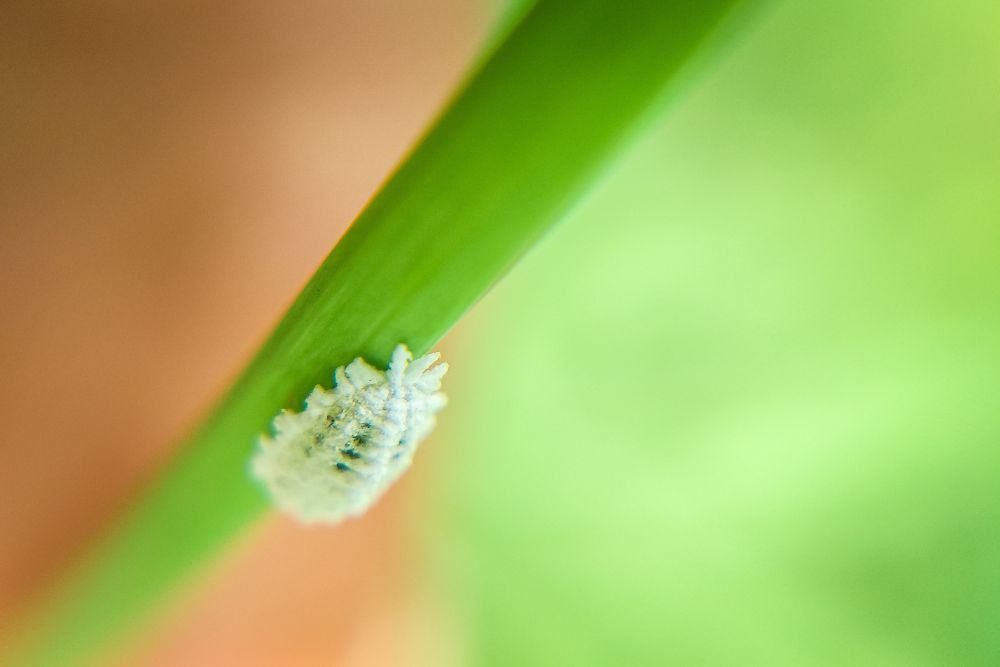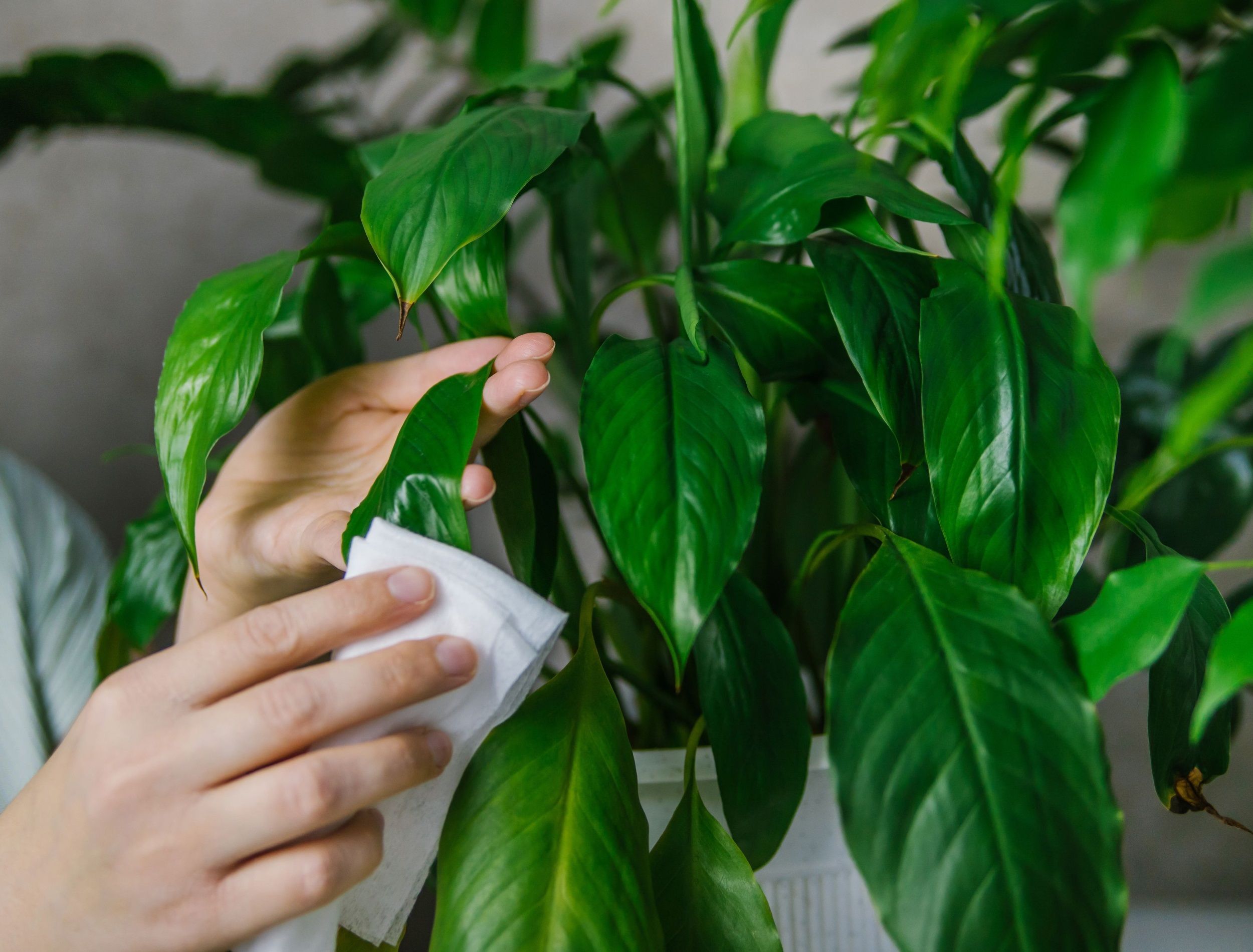Do your houseplants not look as lush and full of life as when you first brought them home? Are their leaves looking a bit on the dull side lately? It may be time for a deep clean of your beloved plants. Fear not, with just a few simple steps, you can give your green friends a spa day and make them shine bright again!
To help keep your houseplants in tip-top condition, here are five great ways to restore that lusciousness to all of your plant’s leaves quickly and with little hassle. Read on to learn how!
Use Lukewarm Water
Image credits: Stanislav71 via Shutterstock
One simple way to keep your plants sparkly is by using lukewarm water to gently clean the leaves. This process helps remove dust and debris that may build up over time and clog a plant’s pores. This accumulation of dust will prevent it from absorbing nutrients, moisture, and disrupts photosynthesis.
To do this, fill a bowl or container with tepid water and lightly dip a cloth in it. With the damp cloth wipe the leaves gently as not to don’t damage any of the delicate foliage. Gently wash down each leaf, making sure no water accumulates in the stems.
When done, dry off any excess water with a soft cloth before returning the plant to its spot. Not only does this help keep your houseplants looking vibrant and beautiful, but it can also give them a better chance of thriving!
Dish Soap
Image credits: Pepijn van Bakel via Shutterstock
If you’re looking for an effective way to clean your houseplant leaves, try using dish soap!
Mix up a room-temperature solution of gentle dish or castile soap, and water, then put the plant in a sink. Use a sponge to lightly wipe down each leaf with the soapy mixture. Once you’ve sponged off all the leaves, rinse them with clean water. This method works on most plants. However, do not use soap on succulents; use only water.
For larger plants, it may be easier to bring them into the shower but make sure not to use too much pressure when sponging them off. After you have rinsed the plant, allow it to thoroughly drain before returning it to its spot in your home. Do not overwater your plants during the cleaning process, as this can lead to root rot and other issues. You never want to leave your plant sopping wet so remember to dry the leaves.
Remove Pests
Image credits: Ravi Kant via Pexels
If your houseplants have become infested with pests such as aphids or thrips, quickly isolate your plant before they spread to other plants. Luckily, there are solutions to get rid of the pests that may be bothering your houseplants.
Neem oil is one of the most effective methods for ridding your indoor plants of nasty pests like aphids, whiteflies, spider mites, thrips, mealybugs, and fungus gnats.
To make a neem oil solution for your plants, mix ½ teaspoon of organic neem oil, a few drops of dish soap, and enough warm water to fill up a spray bottle. Simply mix all the ingredients together and spray it over your infested plants.
Alcohol is another great alternative. Simply dip a cotton swab in rubbing alcohol and gently apply it directly on the bugs. The alcohol will kill the pests right away, preventing more from coming back. Avoid breaking leaves and stems while applying your cotton swab so as not to cause more damage to your plant.
If you find yourself dealing with large infestations or have plants that are already infected, there are other harsher treatments available. Spraying an insecticidal soap, horticultural spray, and essential oils can help eliminate pests quickly and efficiently. Read the directions carefully before applying for safety reasons. Also, don't be afraid to prune heavily infested leaves. Completely removing infested stems and leaves can help control the problem.
Regularly checking for pests on your houseplants is the best way to keep them clean and healthy. With a bit of preventative maintenance, you can enjoy your leafy friends without having to worry about any unwanted guests!
Baby Wipes
Image credits: Alie04 via Shutterstock
Simply take a baby wipe and gently wipe down each leaf (including the underside) taking care not to damage any delicate parts. Use a second baby wipe to remove any remaining excess dirt or dust. Repeat this process as often as necessary, depending on how much grime has built up.
However, there are both pros and cons associated with cleaning your plant leaves with baby wipes you should consider before using this method.
The biggest pro about using baby wipes for houseplant care is convenience. They’re disposable and easy to use, so you can give your plants a quick and effective clean with no extra equipment or water. Plus, most varieties of baby wipes are gentle enough not to damage delicate plant foliage.
On the other hand, there are some drawbacks to using baby wipes on houseplants. Namely, they may not remove all the dirt and grime that’s built up on your plants. In this case, you may need to add mild soap and water to your plant cleaning routine.
Additionally, some baby wipes contain fragrances or other chemicals that could harm plants. Choose an all-natural variety free of harsh chemicals or fragrances before using.
Also, you should never flush baby wipes down the toilet or sink drain, as the combination of oils and paper can build up in plumbing systems and cause blockages. This poses not only a nuisance but a financial burden to fix. Moreover, when these wipes make their way into the ocean ecosystems, they can have devastating environmental effects such as smothering coral reefs or suffocating marine life.
Sparkly Clean!
If your houseplants are looking a little worse for the wear, don’t despair! With a little TLC and some regular care, you can get them back to their former glory in no time. By following the tips and tricks outlined above, you’ll be on your way to becoming a master at cleaning houseplant leaves. Do you have any other tips on how to keep your plants clean? Share them in the comments below!

